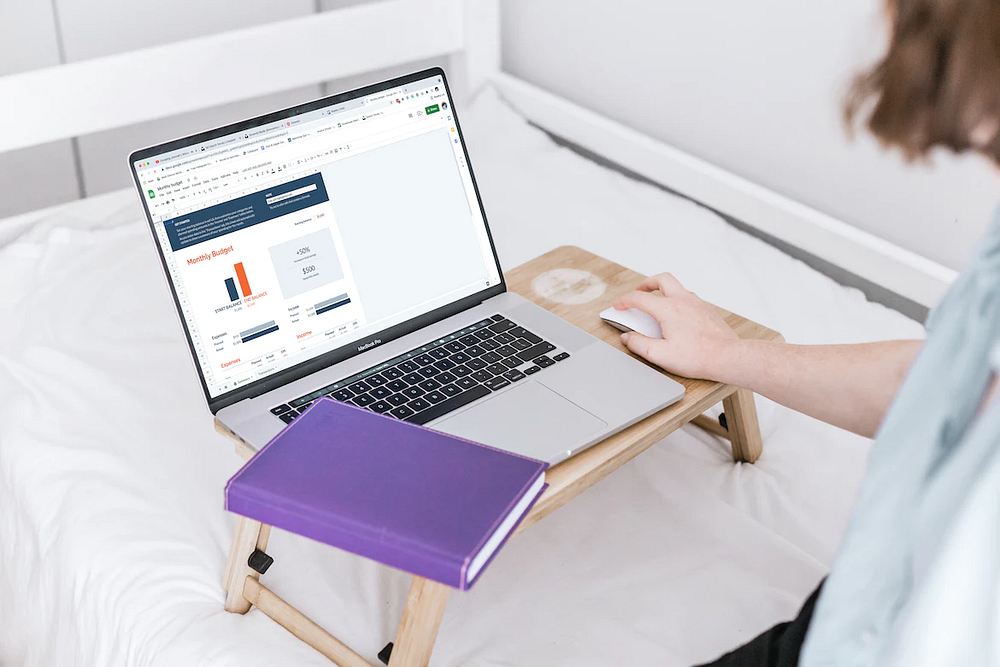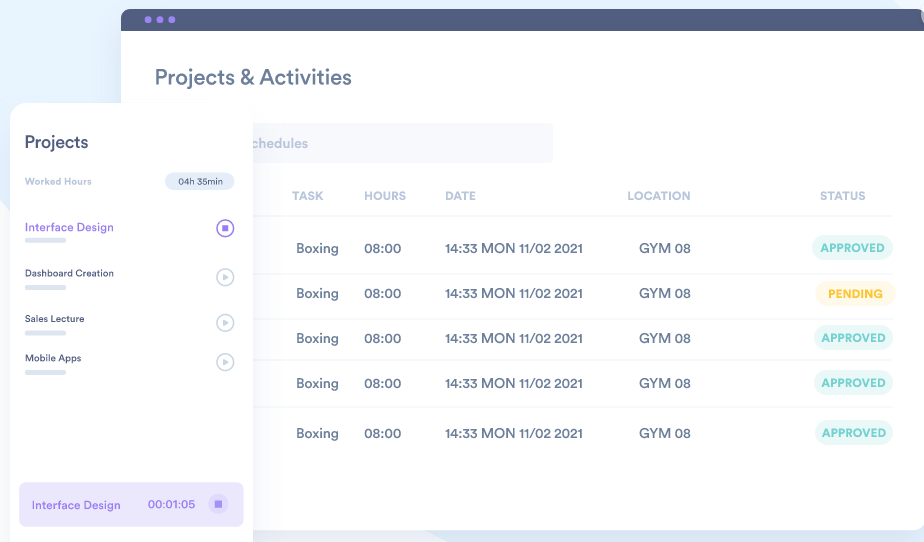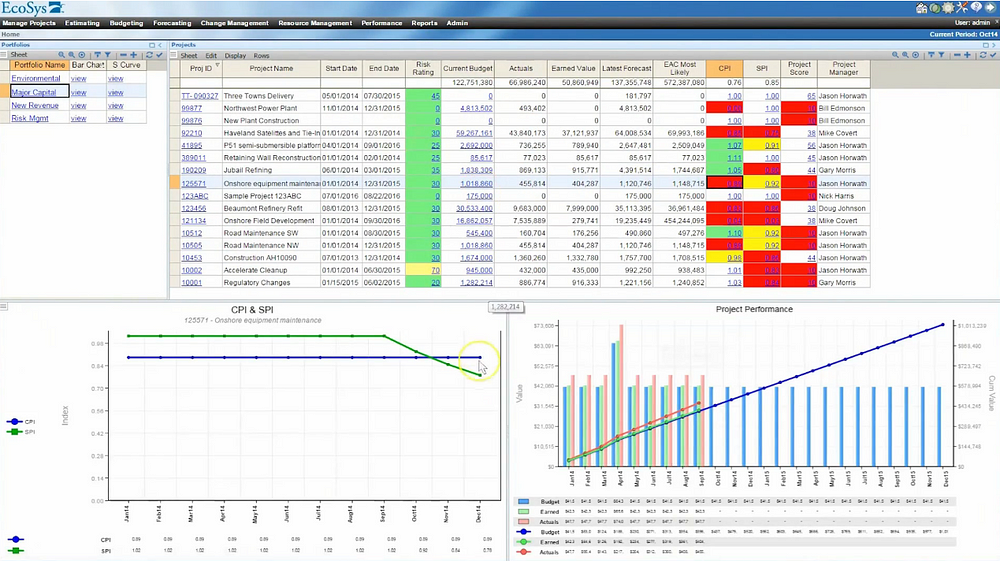Have you ever been in a situation where your project costs have spiraled out of control, leaving you scrambling to manage budgets and deadlines? As a project manager, cost control is an essential part of the job that can make or break the success of your project. Without effective cost-control techniques and strategies, projects can quickly run over budget – jeopardizing their viability and profitability.
This article will examine project cost control fundamentals: traditional methods to modern automation tools. We’ll review the importance of cost management for successful projects, best practices for setting realistic budgets and goals, and everyday issues encountered when controlling project costs.
We’ll also highlight some of the top automation tools to help streamline your cost control processes, allowing you to manage budgets more efficiently and confidently achieve project goals. So, whether you’re a seasoned PM or just starting your career, read on to learn how to take control of your project costs and ensure success.
We’ll discuss:
- What is Project Cost Control?
- Importance of Cost Control in Project Management
- Traditional Project Cost Control Techniques
- Modern Cost Control Approach
- Project Cost Control Techniques And Best Practices
- Challenges with Controlling Your Project Cost
- Automation Tools for Project Cost Control and Management
- Wrap-up: Streamline Your Project Cost Control with Modern Tools

What is Project Cost Control?
Project cost control is the process of monitoring and managing project expenditures to ensure they stay within the project budget. This includes tracking all costs associated with a project, such as labor, materials and equipment, services, transportation expenses, and other related items.
Cost control also involves estimating future expenses and identifying areas where a project can save money or become more profitable. For example, if a project manager discovers that certain materials or services are more expensive than initially estimated, they can negotiate with vendors to find better deals and lower costs.

Importance of Cost Control in Project Management
Effectively controlling and managing your project costs is vital to successful project management. Without cost control, it’s impossible to keep projects within budget and on track for completion. Here are some of the benefits of cost control in project management.
Budget Optimization
Project managers would always like to stay within the allocated budget; cost control can help them do this. By continuously monitoring costs, PMs can identify areas where money is wasted or overspent and make adjustments. This helps ensure that projects are within the allotted budget without sacrificing quality or performance.
Enhanced Profitability
Project managers can ensure projects are profitable and meet desired margins by controlling project costs and efficiently using resources. This helps protect the bottom line of businesses while still delivering quality results on time.
As cost control is an ongoing process, PMs can also identify areas where they can cut costs or increase profits. For example, they may be able to negotiate better deals with vendors or look for alternative materials at a lower cost.
Risk Mitigation
You may have to deal with unknowns on any project, and budget overruns can be one of them. Project cost control helps PMs to identify risks quickly and take measures to mitigate them. For example, if a project runs over budget due to unforeseen circumstances, the manager can look for ways to reduce costs or increase revenue streams before the situation becomes dire.

Efficient Use of Resources
Cost control also enables you to use resources more efficiently. By monitoring your Expenditure and potential waste areas, you can ensure that resources are used only when needed and in the most cost-effective manner possible.
Traditional Project Cost Control Techniques
Traditional project cost control techniques have been around for decades and are still widely used today. These techniques are based on a straightforward approach that involves estimating the cost of a project, tracking actual costs as the project progresses, and comparing the two to identify any variances. Here are some of the most common traditional project cost control techniques:
1. Cost Estimating
When you start a project, the first step is to estimate the total cost. This involves analyzing every task in the project and estimating how much it will cost based on labor, materials, and other expenses. Cost estimates must be as accurate as possible to ensure you don’t run over budget or set unrealistic client expectations.
2. Cost Budgeting
Once you estimate the total cost, you can create a budget. This involves allocating funds to each task and setting limits for specific expenses. Budgeting helps project managers stay on track with their project expenditures and quickly identify areas where they may need to adjust or cut costs.
Popular budgeting methods include:
- Top-Down budgeting: This involves setting a total budget and allocating it to each task within the project.
- Bottom-Up budgeting: Here, you estimate how much each task will cost, then add up all of the expenses to get your total budget.
- Activity-Based budgeting: This approach groups tasks into categories (activities) and allocates funds accordingly.
3. Cost Control
After establishing a budget, cost control is the process of monitoring expenses and adjusting costs as needed to ensure that the project remains within budget. This involves tracking actual costs throughout the duration of the project, comparing them to estimated costs, and making changes if necessary.
4. Earned Value Management
Earned value management (EVM) is a method of tracking project progress and performance by comparing the estimated cost of work completed with the actual cost. This allows you to easily identify variances between planned costs and actual expenses, enabling you to take corrective action if needed.
Traditionally, project cost control relied on manual processes such as creating budget plans and spreadsheets to track costs. This approach can be effective for small projects but quickly becomes cumbersome and time-consuming for larger initiatives.

Modern Cost Control Approach
Today, project cost control is no longer a manual process. Technology has made it possible to automate the entire process, from budgeting and tracking expenses to forecasting potential costs and analyzing data. Automating cost control processes helps project managers stay on top of their budgets in real-time, enabling them to make decisions quickly and efficiently.
Project managers now take a step-by-step approach to cost control, as follows:
1. Setting Realistic Budgets And Goals
Before beginning a project, setting realistic budgets and goals is important. Establishing clear expectations for cost control in the early stages of the project will help ensure that costs are controlled throughout its duration. Project managers should consider potential risks and challenges when setting budgets and any hidden or unexpected expenses that may arise during the project.
2. Identifying Potential Cost Drivers
Once budgets and goals have been established, it is important to identify any potential cost drivers. Cost drivers are factors that may influence the cost of a project. By identifying these factors early in the project planning process, managers can proactively manage costs and avoid budget overruns.
Some common cost drivers include:
- Scope changes
- Resource availability
- Unforeseen risks and challenges
- Changes in project requirements or deliverables
- External factors such as economic conditions or supplier issues.
3. Developing A Cost Management Plan
Ideally, a cost management plan outlines how costs will be monitored and controlled throughout the project’s life. It includes strategies for budgeting, tracking expenses, and controlling costs to ensure that the project remains on budget.
The cost control plan should also include methods for managing changes in scope or requirements that could affect costs. This will help prevent scope creep – when additional features or tasks are added to a project without considering their associated costs or impact on budgets.
4. Creating A Baseline For Cost Tracking
Finally, it is important to create a baseline for cost tracking. This baseline will serve as the foundation for managing project costs throughout the duration of the project. The baseline should include estimated costs, actual costs, and any changes in scope or requirements that have been approved by all stakeholders.
By comparing estimated and actual expenses, managers can identify any potential issues or inefficiencies that need to be addressed.
Project Cost Control Techniques And Best Practices
Project cost control techniques vary depending on the size and scope of a project. While large projects may require more comprehensive cost control processes, smaller projects can benefit from basic cost management strategies such as setting budgets and tracking expenses. Here are some of the best practices for controlling project costs:
Continuous KPI Tracking
KPIs (Key Performance Indicators) are measurable metrics used to track the progress of a project and measure its success. Continuous tracking of KPIs can help you identify potential issues early on and make course corrections as needed. This will help ensure your project remains on track, even if it runs over budget or falls behind schedule.
Many automated tools let you track KPIs in real-time and adjust your project plan as needed. Common KPIs include:
- Time
- Labor utilization
- Material costs
- Budget performance
- Project progress
- Adherence to deadlines

Consider Inflation
Inflation is a significant factor in project costs, as it can significantly affect the budget and timeline of a project. When calculating your project cost control strategies, consider the effect inflation will have on prices throughout your project. This will help you anticipate potential issues and make necessary adjustments to maintain budget targets.
Using past inflation data to estimate future price changes is a good idea. This can help you plan your budget more effectively and avoid surprises. In addition, you can also consider seasonal price changes and fluctuations in the market to calculate your budget more accurately.
Time Tracking and Management
One of the most crucial cost control elements is tracking and managing time. This includes ensuring your team works efficiently and effectively to maximize productivity and stay within the allotted project timeline.
Use a time-tracking tool like an online timesheet software or a project management platform with built-in task-logging features to ensure you accurately track time. These tools can help you track employee hours in real-time and monitor labor costs more closely. You can also set up automated alerts for tasks not completed on schedule or for budget overruns.
Profitability Tracking
Profitability tracking is a critical part of effective cost control. It helps you track costs, revenue, and other factors to ensure your project remains profitable. You can use profitability metrics to measure the success of a project, compare performance with prior projects and adjust your strategy as needed.
Standard profitability metrics include:
- Gross margin
- Net profit margin
- Return on investment (ROI)
Advanced time-tracking tools like Day.io can track profitability and cost metrics in real-time, allowing you to make quick decisions when needed.
Review Budget if Necessary
While it’s ideal to stay within your project budget, sometimes it may be necessary to review and adjust the budget. On many occasions, you may need to change your budget to respond to market opportunities.
When reviewing your budget, be sure to consider the following factors:
- Material and labor costs
- Contingency plans
- Inflation rates
- Market conditions
- Project timeline
These considerations will help you better understand how much additional capital is needed to complete your project. If necessary, adjust your budget accordingly and monitor performance against it.
Challenges with Controlling Your Project Cost
Controlling project costs can be a challenge for any project manager. One of the biggest issues is underestimating the resources and materials needed to complete the project. This can lead to budget overruns, delays in completion, or even scrapping the entire project altogether. Other common challenges include:
- Unexpected Changes: Changes in scope or other unforeseen factors may cause costs to increase unexpectedly, making it difficult for PMs to stay on target with their budgets and timelines.
- Lack of Communication: Poor communication between stakeholders can also lead to unanticipated expenses, as each party has different expectations regarding cost control and management measures.
- Inaccurate Estimates: Poor estimation of project costs can result in mismanagement of resources and budget overruns.
3 Automation Tools for Project Cost Control and Management
Many automation tools are available today for project cost control and management. These solutions can help streamline the process by automating mundane tasks such as tracking expenses, creating reports, budgeting for future projects, and more.
Some of the top tools for project cost control include:
1. Day.io – Best Project Cost Control Platform with Precise Time Tracking

Day.io is an all-in-one project cost control platform with precise time tracking and reporting capabilities. It allows users to easily track expenses, generate accurate budgets, and manage project costs in real-time. The time tracking and reporting features make it easy to identify areas where costs are over budget and take corrective action.
Day.io also offers comprehensive reporting tools with detailed insights into cost and performance, allowing users to always stay on top of their projects. You can easily control paid time offs and overtime and export data to other project management and office automation platforms.
Features
- Time tracking with monitoring and fraud-prevention measures
- Cost tracking and budgeting tools
- Real-time cost control with comprehensive project reporting
- Project performance monitoring
- Integrations with project management and office automation platforms
- Accurate invoicing with detailed time/cost reports
- Extensive search capabilities for easy data retrieval
- Flexible scheduling options for staff and teams
Pricing
Project and time tracking package starts from $6 per user/month
2. EcoSys – Excellent Combo of Cost Control and Portfolio Management

EcoSys comes with a powerful combination of cost control and portfolio management tools. It helps users manage multiple projects simultaneously while keeping costs in check. EcoSys is highly scalable, allowing it to be used for small projects and large-scale initiatives.
The platform offers many features such as budget planning, resource allocation tracking, financial report generation, project forecasting, etc.
Features
- Integrated cost control and portfolio management
- Centralized reporting for comprehensive project visibility
- Real-time budgeting with dynamic resource allocation
- Extensive performance tracking capabilities
- Complete audit trail of all activities and changes to the system
- Comprehensive risk analysis tools for better decision making
- Robust analytics for in-depth assessment of project costs
Pricing
Custom pricing depending on features and the nature of deployment.
3. ProjectManager – Enterprise-grade Cost and Workflow Monitoring

ProjectManager enables users to monitor project costs and workflow in real time. It offers a comprehensive suite of tools for budgeting, resource allocation, cost control, and more. The platform also comes with insightful analytics that provide valuable insights into project performance.
Features
- Real-time cost and workflow tracking
- Comprehensive reporting for better visibility into project progress
- Resource management capabilities for efficient task allocation
- Integrated Gantt charts for precise timeline management
- Mobile access to track costs from anywhere in the world
- Flexible budgeting options with automatic alerts when budgets are exceeded
- Easy collaboration between internal and external stakeholders
Pricing
- Team: $16 per user/month
- Business: $28 per user/month

Wrap-up: Streamline Your Project Cost Control with Modern Tools
By implementing the proper techniques, strategies, and automation tools, you can ensure that your projects stay on track and within budget – leading to tremendous success for all involved.
So, if you’re looking for ways to streamline your project cost control process, consider investing in modern tools like Day.io. With their advanced features and intuitive interfaces, these solutions offer a comprehensive way to manage budgets more efficiently – allowing you to achieve better results faster.
Sign up now for Day.io and take the first step towards mastering cost control in project management.
